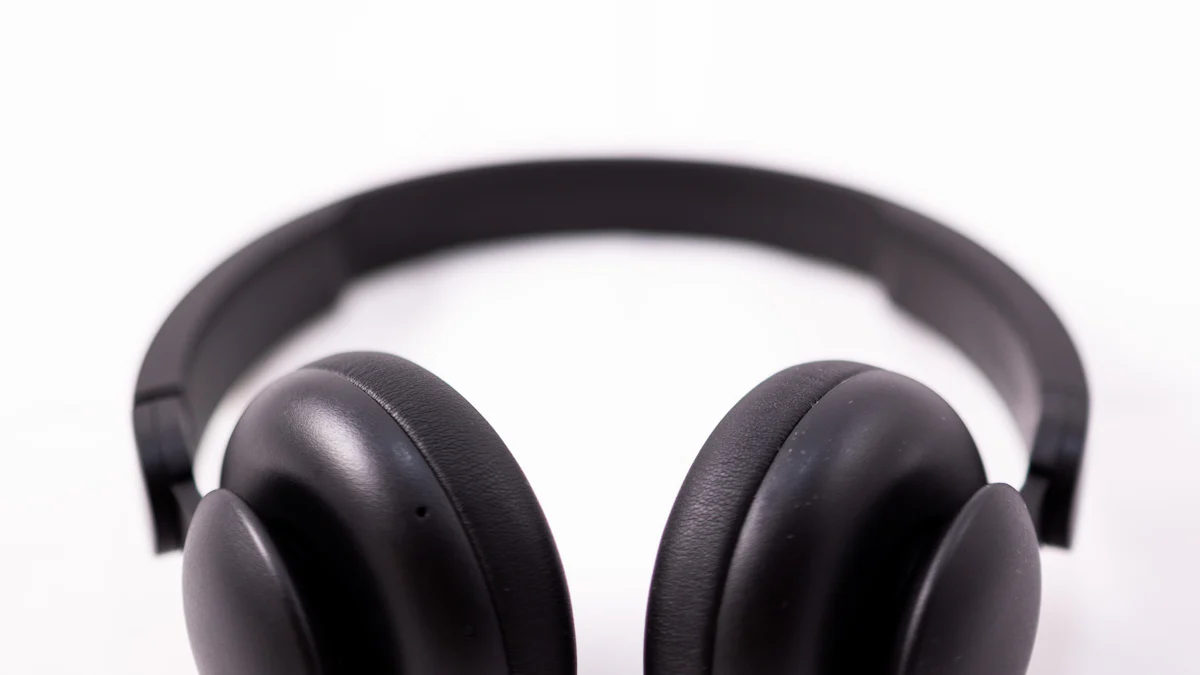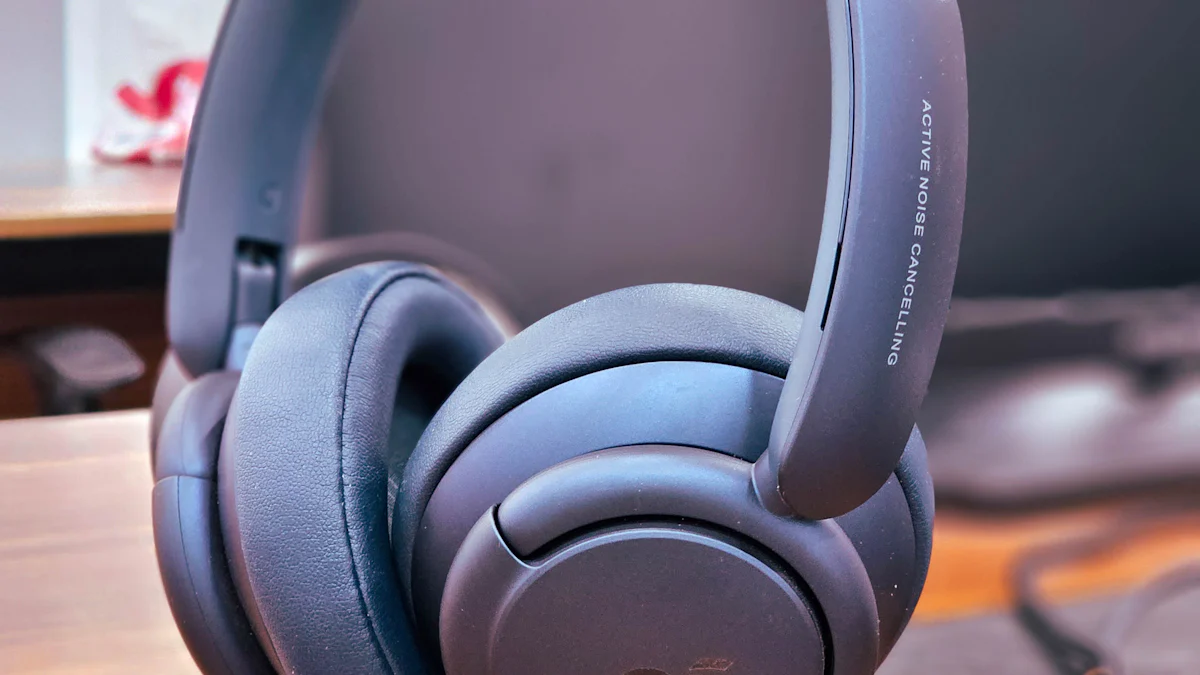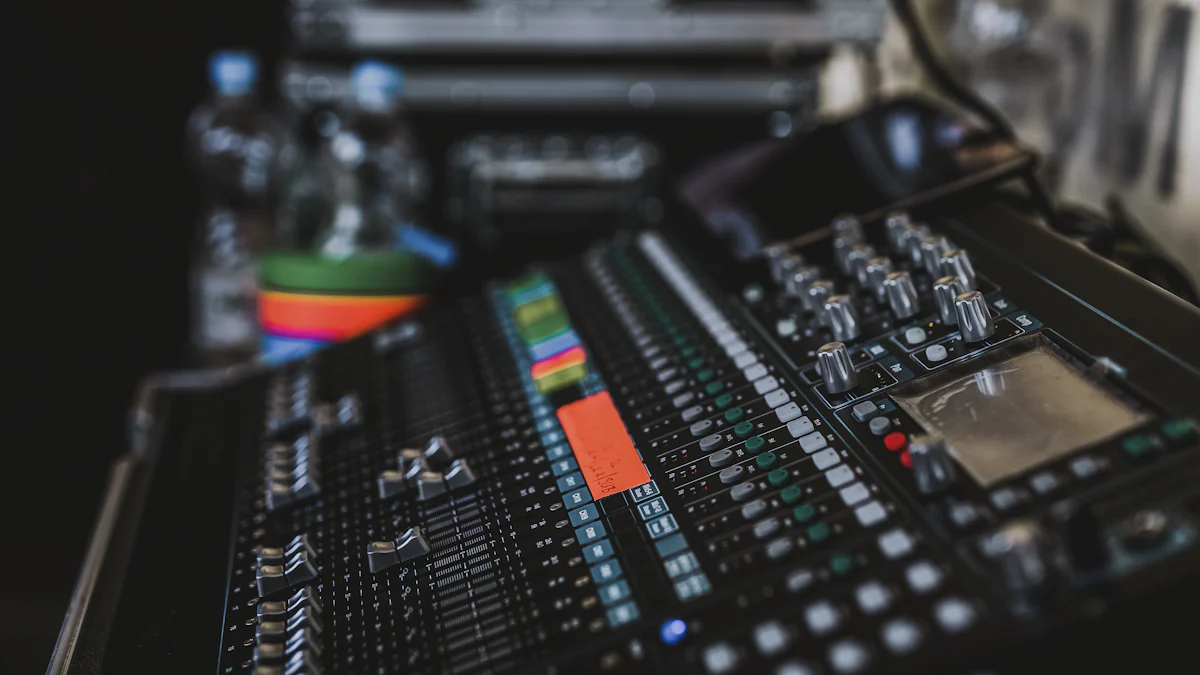Noise Cancelling Headphones: A Sound Evolution

ANC technology represents a groundbreaking advancement in the audio experience. Noise cancelling headphones employ sophisticated algorithms to counteract external noises, providing a serene listening environment. The 2010s witnessed the widespread adoption of ANC, with companies like Bose, Sony, and Beats by Dre introducing new generations of ANC headphones and earbuds. The global market for headphones is booming, with countries such as the United States leading in innovation. The importance of ANC technology in modern audio devices cannot be overstated, as it transforms how users engage with sound.
Evolution of Noise Cancelling Headphones

Early Developments
The Evolution of noise-cancelling technology began in the 1950s. Paul Lueg proposed the idea of active noise control, laying the groundwork for future advancements. His concepts and patents provided a foundation for what would become a revolutionary technology. Lawrence Jerome Fogel contributed significantly by creating one of the first systems for noise cancellation.
Advancements in ANC Headphones
The Evolution of ANC Headphones took a significant leap forward in the 1970s. Dr. Amar Bose, founder of Bose Corporation, played a pivotal role during this period. In 1978, Bose introduced active noise cancellation to the market, marking a new era for audio devices. The introduction of Active Noise-Canceling Headphones by Bose set a precedent that other companies would follow over the decades.
Breakthrough of Over-Ear ANC
The Breakthrough of Over-Ear ANC headphones marked another milestone in audio technology. Over-ear designs enhanced noise cancellation capabilities by providing better sound isolation. This design became popular among consumers seeking high-quality audio experiences without external disturbances. The market growth for over-ear Active Noise-Canceling Headphones reflects their increasing demand and effectiveness.
Understanding ANC Technology
Science Behind ANC
ANC technology revolutionizes audio experiences by using sound waves to counteract unwanted noise. The core principle involves generating an anti-wave that neutralizes incoming noise, creating a quieter environment. This process relies on the physics of waves, where two opposing waves can cancel each other out, resulting in silence. The concept of anti-noise forms the foundation of this groundbreaking technology.
How Noise Cancellation Works
The effectiveness of Noise Cancellation Work depends on precise components like microphones and op-amps. Microphones detect ambient noise, capturing the sound profile in real-time. Op-amps process these signals, generating anti-noise that matches the detected noise frequency but in reverse phase. This synchronization ensures effective cancellation, allowing users to enjoy a serene listening experience without external disturbances.
Deciphering Sound Waves
Understanding how Deciphering Sound Waves works is crucial for accurate noise reduction. When sound and anti-noise waves interact, they create a phenomenon known as destructive interference. This interaction effectively cancels out unwanted sounds, leaving only the desired audio intact. Accurate detection and analysis of ambient noise remain vital for achieving optimal results with ANC technology.
Over-Ear ANC Headphones
Features of Over-Ear ANC Headphones
Over-Ear ANC Headphones have revolutionized the audio industry. The design and comfort of these models stand out in the market. Acoustic noise cancelling headphones provide a snug fit, ensuring minimal sound leakage. This feature enhances the listening experience by isolating external noise effectively. Brands like Bose focus on ergonomic designs that prioritize user comfort during extended use.
The advantages of Over-Ear Active Noise-Canceling Headphones are numerous. These headphones offer superior sound quality with deep bass and clear treble. The active noise cancellation technology employed in these devices ensures an immersive audio experience. Users can enjoy music without distractions from ambient sounds, making them ideal for travel or noisy environments.
Meeting Consumer Needs
Meeting consumer needs is crucial for the success of ANC headphones a technological marvel. Adaptation to different environments is essential for these devices. ANC headphones allow listeners to switch between modes that suit their surroundings, whether on a plane or in a quiet room.
User preferences play a significant role in shaping product features. Feedback indicates that consumers value both performance and affordability. Brands like Srhythm balance these aspects by offering high-quality yet affordable options in the market. Consumers appreciate how ANC headphones empower them to control their auditory environment effortlessly.
The demand for Over-ear ANC headphones stand as proof of their effectiveness and popularity among users seeking peace amidst chaos.
Future of ANC Technology

Innovations in ANC Headphones
Future advancements in ANC technology promise to redefine the audio landscape. Engineers are exploring AI-enhanced noise-canceling systems that adjust in real-time based on environmental cues and user behavior. This innovation will allow headphones to adapt seamlessly to different surroundings, providing an optimal listening experience. The integration of advanced algorithms will enable more precise noise cancellation, addressing both lower and higher frequency noises effectively.
The future trends in noise cancellation include expanding applications beyond traditional headphones. Companies are developing solutions for specific environments like home offices and vehicle cabins. Siemens, for instance, focuses on enhancing ANC algorithms for cabin comfort by targeting road noise. These developments highlight the potential for future ANC headphones to cater to diverse consumer needs across various settings.
Future of Over-Ear ANC
The future of over-ear ANC headphones holds exciting possibilities. Manufacturers aim to improve design ergonomics and sound quality further while maintaining effective noise isolation. Expected developments include lighter materials and more compact designs without compromising performance. The focus remains on delivering superior comfort during extended use.
Predictions for the future of ANC technology suggest a shift towards personalized audio experiences. Users may soon have access to customizable settings that tailor noise cancellation levels according to individual preferences. This personalization will enhance user satisfaction by offering a bespoke auditory environment.
The evolution of noise-cancelling headphones has transformed the audio landscape. The journey from early concepts to today's sophisticated devices highlights significant technological advancements. ANC technology plays a crucial role in enhancing audio experiences by providing quiet environments for deep work and relaxation.
Future possibilities in ANC include intelligent features such as voice assistants and intuitive controls. These innovations promise seamless integration into daily life, offering enhanced connectivity and user interaction. AI-enhanced noise-canceling technology holds boundless potential, shaping how people experience sound across various settings, including autonomous vehicles and remote workspaces.
See Also
Exploring Tranquility through Audio Relaxation: Journey to Inner Harmony
Perfecting PC Audio Visual Skills: An Easy-to-Follow Manual
Easy Guide to Incorporating Echo Effects in Online Audio at No Cost
Battle of Brands for Top Performance: 10ft USB to Micro USB Cables
Comparison of 2024 HD 1080P Noise-Canceling Cameras: Lulunami vs. Sherpatera
